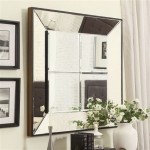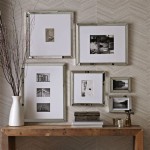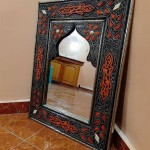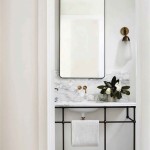The Alluring Appeal of the Mercury Glass Mirror Effect
The mercury glass mirror effect offers a unique and antique aesthetic, transforming ordinary surfaces into shimmering, reflective pieces reminiscent of vintage décor. This effect, achieved through various techniques, captures the aged beauty of traditional mercury glass while offering versatility in application and design.
Understanding the Authentic Mercury Glass
Genuine mercury glass was created by pouring a silvering solution, containing mercury, between two layers of glass. This process resulted in a reflective surface with a characteristic speckled, slightly distressed appearance. Due to the toxicity of mercury, this method is no longer commonly practiced. However, the visual appeal of antique mercury glass remains highly sought after, leading to the development of numerous techniques to replicate the effect without the use of hazardous materials.
Modern Methods for Achieving the Mercury Glass Mirror Effect
Several techniques replicate the mercury glass look without using actual mercury. These methods offer safer and more accessible ways to achieve the desired aesthetic.
Key Techniques for the Mercury Glass Mirror Effect:
Several techniques can be employed to achieve the mercury glass mirror effect:
1. Spray Paint Method
Specialized spray paints formulated to mimic the look of mercury glass are readily available. These paints create a reflective surface with a subtle, aged patina. This method is user-friendly, suitable for various surfaces, and requires minimal equipment.
2. Mirror Backing Paint
Looking-glass spray paint creates a mirror-like finish on the back of clear glass or acrylic, mimicking the reflective quality of traditional mercury glass. This technique, often combined with a light antiquing layer, produces a convincing illusion of depth and age.
3. Silvering Solutions
Commercial silvering solutions, free of mercury, offer another approach. These solutions, applied to glass or plastic, create a reflective surface that can then be antiqued or distressed for the desired effect. This method provides a more authentic, chemically-created reflective surface compared to spray paint.
4. Water-Based Silvering and Antiquing
Water-based silvering solutions presented as kits are available for DIY enthusiasts. These kits often include antiquing solutions to further enhance the aged look and offer a user-friendly approach to achieving the mercury glass effect on various materials.
Suitable Surfaces for the Mercury Glass Mirror Effect
The mercury glass mirror effect can be applied to a variety of surfaces, broadening design possibilities.
Common Surfaces:
The following materials are well-suited for the mercury glass effect:
1. Glass
Glass, in various forms such as panels, vases, and ornaments, provides an ideal surface for the mercury glass effect, offering transparency and a smooth base for reflective finishes.
2. Acrylic or Plexiglass
A lightweight and shatter-resistant alternative to glass, acrylic allows for application on projects where durability is a concern, maintaining a similar visual effect.
3. Wood
Prepped and sealed wooden surfaces can also be treated with mercury glass effect paints, offering a unique blend of rustic and reflective elements.
4. Metal
Metal objects, especially those with a smooth finish, can be transformed with the mercury glass effect, creating a striking contrast between the metallic base and the aged, reflective surface.
5. Plastic
Certain types of plastic, when properly prepared, can also accept the mercury glass finish, offering a versatile and cost-effective option for various projects.
Applications of the Mercury Glass Mirror Effect
The versatile mercury glass mirror effect finds application in a wide range of design projects.
Common Applications:
Some popular applications include:
1. Decorative Mirrors
Creating decorative mirrors with the mercury glass effect adds a touch of vintage elegance to any space.
2. Vases and Candle Holders
Transforming ordinary vases and candle holders with the mercury glass finish elevates their aesthetic appeal, creating captivating centerpieces and decorative accents.
3. Holiday Ornaments
The shimmering, reflective quality of the mercury glass effect makes it a popular choice for holiday ornaments, adding a touch of sparkle and vintage charm.
4. Furniture Accents
Incorporating the mercury glass effect on furniture details, such as drawer pulls or decorative panels, introduces a subtle yet impactful design element.
5. DIY Projects
The accessibility of various mercury glass effect techniques allows for creative incorporation into numerous DIY projects, from crafting custom picture frames to upcycling existing home décor.
Achieving the Desired Level of Antiquing
The degree of antiquing applied significantly impacts the final appearance of the mercury glass mirror effect. From subtle distressing to heavily antiqued finishes, the desired level of aging can be controlled through technique and application.
Antiquing Techniques:
Several methods can be used to antique the finish:
1. Layering and Dabbing
Applying multiple thin layers of paint and gently dabbing with a cloth or sponge creates a textured, aged appearance.
2. Using Antiquing Solutions
Applying specialized antiquing solutions to the painted surface and wiping away excess creates a more controlled, aged patina.
3. Distressing with Sandpaper
Lightly sanding areas of the finished surface after the paint has dried replicates the wear and tear of authentic antique mercury glass.

Flipping Houses Home Renovation In Silicon Valley

How To Create Mercury Glass Jennifer Rizzo

Diy Mercury Glass Gilded Mirror Made From Old Photo Frames

Diy Mercury Glass Effect Using Mirrored Spray Paint Mirror

20 Things That Will Sparkle With Mercury Glass Mirror Paint Craftionary

20 Things That Will Sparkle With Mercury Glass Mirror Paint Craftionary

Diy Mercury Glass Gilded Mirror Made From Old Photo Frames

Mercury Glass Rust Oleum

Mercury Mirror

Diy Mercury Glass Pumpkin How To Turn Any Into 31 Days Of Fall Inspiration








